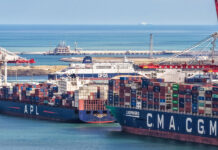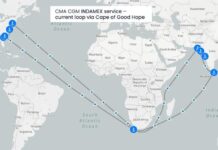With the Mobility package focusing on road and digitalisation, with the contingency plans after Rastatt incident addressing shortcomings in rail freight, and with the BER in liner shipping, ESC is also following inland waterways (IWW). And rest assured, digitalisation in IWW is as high on the agenda as in any other transport mode. The European Commission in its recent staff working document presents the stay of play in Digital Inland Navigation. This includes the needs of the sector as described in the study on digitalisation and the existing initiatives and tools.
According to the Digital Inland Waterway Area: Towards a Digital Inland Waterway Area and Digital Multimodal Nodes (DINA) study, there are certain conditions to fulfill to make inland waterways traffic smoother and inland navigation processes more efficient for stakeholders.
First, it is necessary to improve navigation and traffic management. The current lack of up-to-date information on traffic conditions (e.g. delays at a certain bridge or berth allocations in ports) makes it difficult to adapt voyage plans.
Second, it is necessary to integrate inland waterway navigation in logistics processes. E.g., there is little information provided about the journey. To plan their internal operations, terminal operators want to know when a specific barge is going to arrive. But currently there are no standardised schemes in place to provide this information. This is especially important for multimodal (containerised) operations.
Third, there is a need to reduce the administrative burden. Barge operators file the same data multiple times, either to comply with different aspects of legislation, or because they are dealing with multiple jurisdictions in cross-border operations, or both. Reducing the number of business-to-government declarations via e-government solutions would make law enforcement more effective.
As for the initiatives and tools that the European Commission outlines in its staff working document, there are expert groups dedicated specifically to inland navigation (NAIADES II, DINA, Social Issues and Technical Requirements for Vessels) and there are cross-modal and cross-sectoral international settings (such as the Digital Transport and Logistics Forum) where inland navigation is part of the discussions. River commissions, river information services (RIS) experts, United Nations Economic Commission for Europe (UNECE), and the European Committee for drawing up standards in the field of inland navigation (CESNI) also contribute to the discussion on the digitalisation of the inland waterway transport sector.





